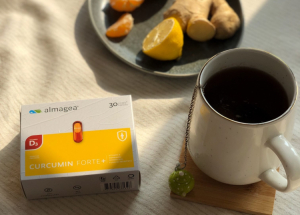
Vitamin D and recommendations for its intake starting this autumn
![]() LIFESTYLE
LIFESTYLE ![]() 8 MIN
8 MIN ![]() ALMAGEA
ALMAGEA ![]() 09.10.2020
09.10.2020

![]() LIFESTYLE
LIFESTYLE ![]() 8 MIN
8 MIN ![]() ALMAGEA
ALMAGEA ![]() 09.10.2020
09.10.2020
The Croatian Institute of Public Health has published guidelines for vitamin D supplements starting in autumn. Here’s what it means.
Dietary supplements encompass concentrated reservoirs of nutrients or other substances possessing nutritional or physiological functions, whether utilized individually or in conjunction. Their purpose is to support the addition of nutrients in the regular diet and supplement it with substances not obtained in sufficient quantities through average food intake. This way, they will have a beneficial effect on health, increasing the general resistance of the organism to stressful external factors and, at the same time, maintaining proper physiological functions of the body.
Scientific studies have uncovered a link between low vitamin D levels and the frequency of many infectious diseases, especially that of the upper respiratory tract and enteroviruses, pneumonia, ear infections, dengue fever, hepatitis B and C, and HIV infection. The underlying mechanism for this anti-infective effect is shown in how vitamin D reduces the interference of cathelicidin and beta-defensin 2 in phagocyte and epithelial cells.
Vitamin D is the critical element that contributes to the immune system response. Therefore, its maintenance at optimal levels in the blood is considered a strategy potentially leading to efficient defense against respiratory infections, especially in people at an older age and patients with comorbidities.
Research has shown that high vitamin D levels can help reduce the risk of viral epidemics and maintain immunity, muscle strength, and bone density. In contrast, low vitamin D levels are linked to malignant, cardiovascular, autoimmune, neurological, chronic respiratory diseases, diabetes, and hypertension. Patients with these diseases and getting infected with COVID-19 have mostly died.
Therefore, educating the population about the potency of vitamin D, its supplementation, and concentration monitoring in the blood is necessary.
Vitamin D is classified as one of the fat-soluble vitamins, and its primary source in humans is its synthesis in the skin when exposed to sunlight.
The richest natural sources of vitamin D in food are cod liver oil and other fatty fish, followed by tuna, sardines, mackerel, cod, salmon, seafood (fatty fish and fish oils provide 15-25% of total intake), shiitake mushrooms, liver and egg yolk. Eggs (provide 11-13% of total intake).

Studies published in The Journal of Alimentary Pharmacology and Therapeutics reveal that almost 50% of the population has insufficient vitamin D in their blood, primarily during winter, provided they live north of the 35th parallel. Inadequate amounts of vitamin D can be a public health problem, correctable by proper diet and supplementation. Risk groups in the COVID-19 pandemic are the elderly and patients with multiple associated diseases – precisely those with low blood vitamin D levels.
Under the Croatian Guidelines for using vitamin D, the recommended vitamin D concentration in the population’s blood should be 75 nmol / L – 125 nmol / L. Such a concentration is enough to combat infectious diseases successfully. Adults facing the risk of vitamin D deficiency are advised to contemplate preventive doses falling within the range of 1500 to 2000 IU, with the understanding that 400 IU corresponds to 10 µg. The recommended daily dose at EU and Croatian levels is five µg, 100% of the recommended daily intake (% RI). In confirmed vitamin D deficiency in adults, general practitioners and dietitians typically recommend an initial administration of high-dose vitamin D, followed by a maintenance dose ranging from 1500 to 2000 IU to sustain adequate levels. After undergoing supplement therapy with vitamin D, a re-testing of 25-OH D is recommended in the blood after a lapse of three months.
According to the mentioned Croatian Guidelines, the elderly population should have a higher daily intake of 800 IU (20 µg). If there’s a shortage, the dose should be increased under the doctor’s supervision for a limited period. The European Food Safety Authority (EFSA) advises a daily intake of 600 IU for healthy individuals, while the highest acceptable daily limit is 4000 IU.
Studies conducted this year and published in the Journal of Infection and Public Health have shown that vitamin D supplements protect against respiratory infections. It is recommended to take 25-50 µg per day. This will have no pronounced side effects.
A recent recommendation from the British Public Health Service (NHS), which applies to the entire population, and especially to people in isolation, insists upon the daily use of 10 µg or 400 IU of vitamin D. It is based on the fact that staying indoors means a higher risk of developing vitamin D deficiency.
Across Europe, vitamin D deficiency among infants and young children spans from 10% to 30%, underscoring the insufficiency of natural skin synthesis of vitamin D to eliminate the need for dietary intake and supplements. Croatia’s standard pediatric national prophylactic measure uses 400 IU (10 µg) daily for all infants in their first year. According to the European Pediatric Society for Gastroenterology, Hepatology, and Nutrition recommendations, children not exposed to the sun and who spend most of their time indoors are considered a risk group for vitamin D deficiency. Therefore, after the first year, a daily intake of 600 IU (15 µg) of vitamin D is recommended.
Source: Hrvatski zavod za javno zdravstvo
Downloaded from: vitamini.hr
Za hormonalnu ravnotežu, rad metabolizma i održavanje optimalne razine energije.
26.98 €